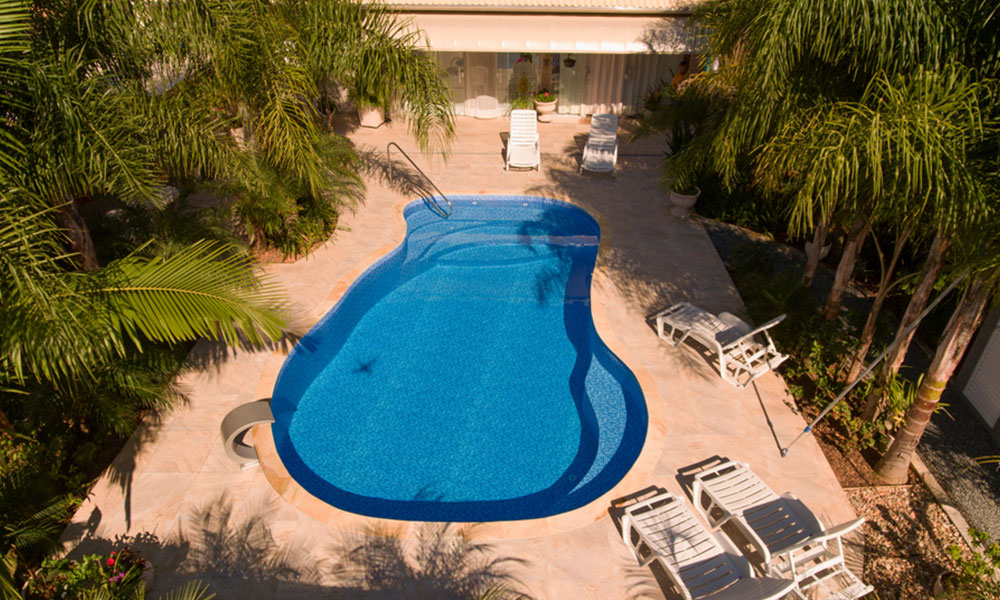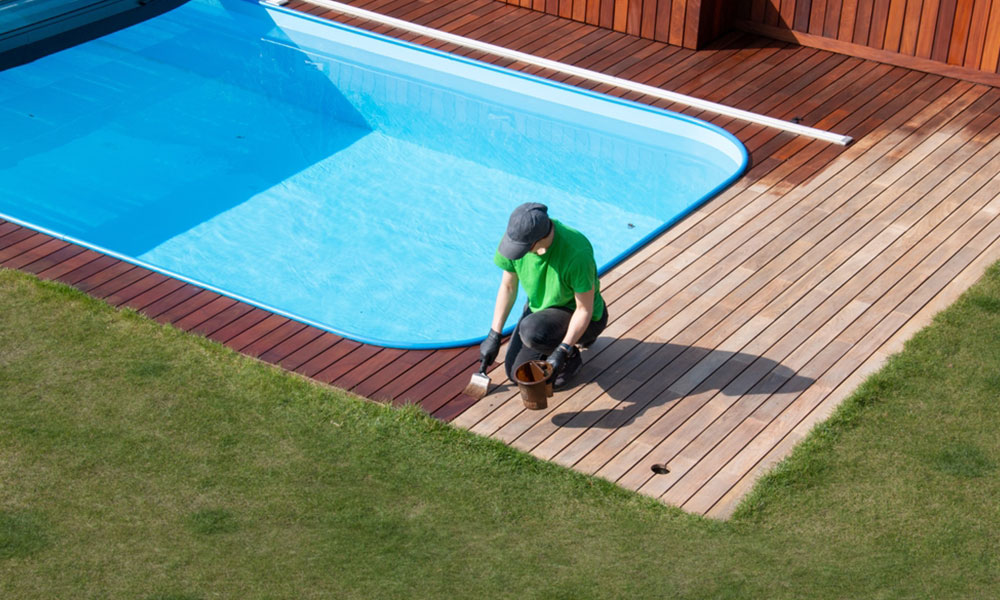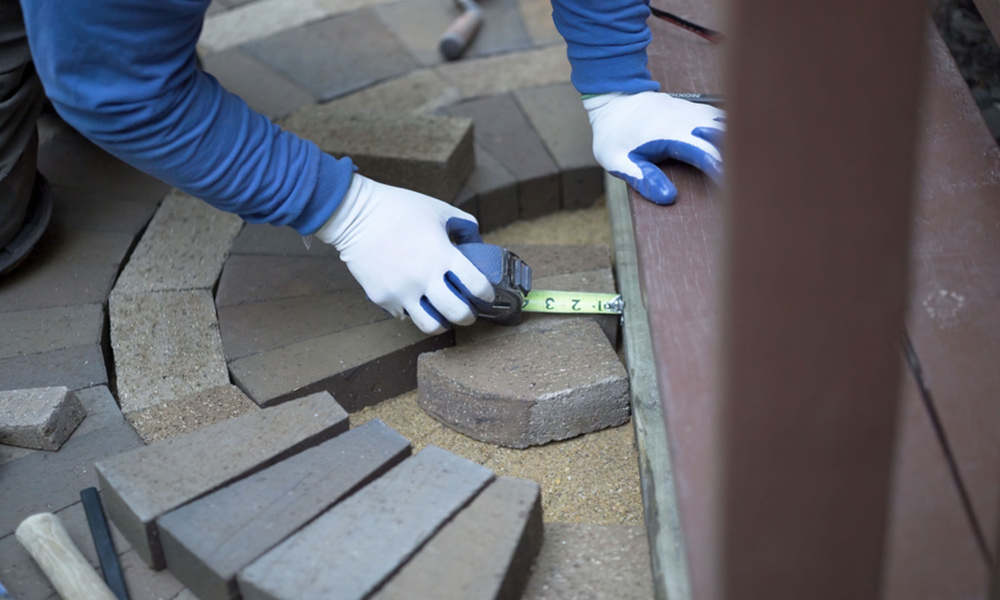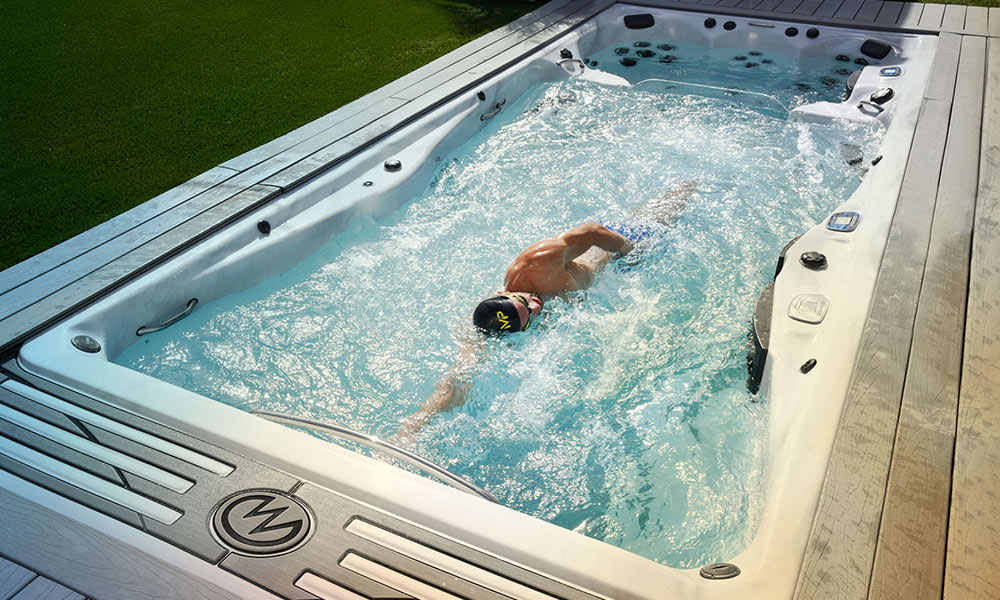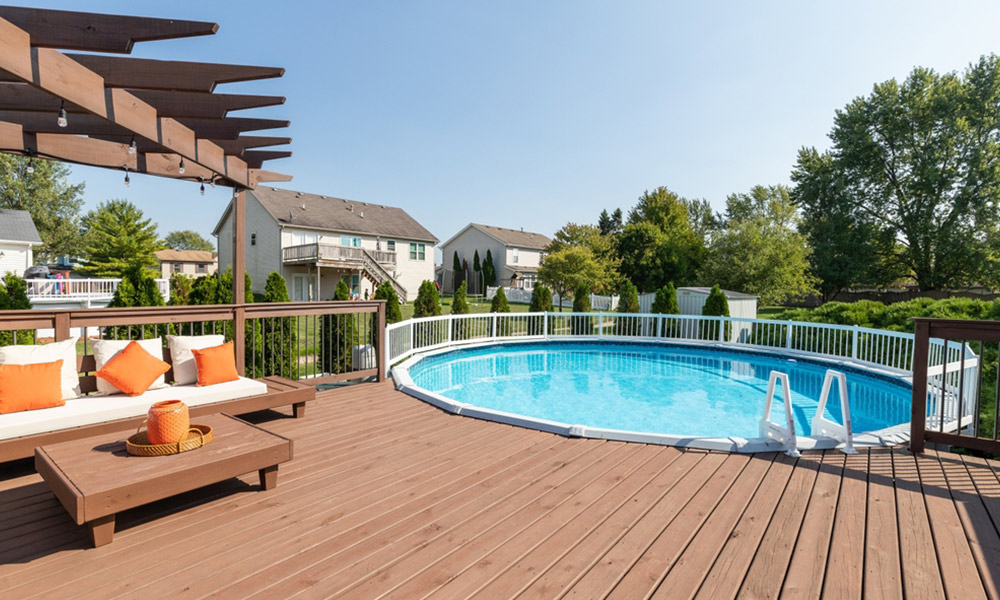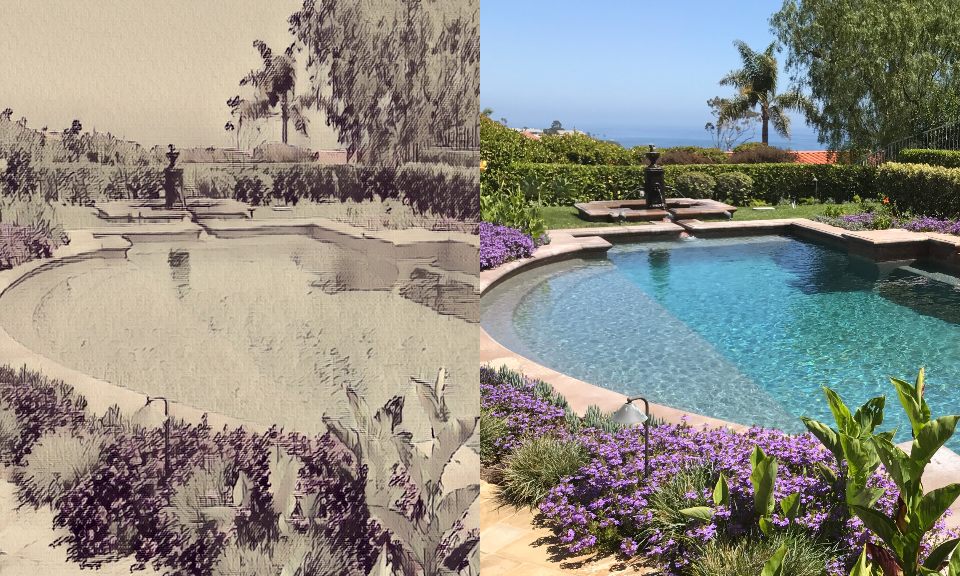Table of Contents
ToggleVinyl inground pools are one of the most popular swimming pool types. But their popularity doesn’t always go hand in hand with familiarity. There’s a lot to learn about vinyl before deciding on whether or not it’s the right option for you. And you’ll soon discover every important point about it. So when the time comes to decide on a pool you’ll know exactly whether vinyl is the right choice for you.
Parts of a Vinyl Pool
People often talk about pools as singular entities. But any pool, and especially vinyl, consists of multiple elements. And each of the following plays an important part in any vinyl pool.
Wall Panels
Wall panels are less mysterious than you might expect. In fact, the term is nearly self-explanatory. The panels create the actual walls within a pool. Wall panels extend over something close to the totality of the pool. The only exception is the area where paneling gives way to pool steps. The paneling is typically around 42″ and is made of steel, plastic, or aluminum.
The Pool Floor
People often think of the pool floor as just an extension of the wall. But in reality, the pool floor consists of two main components. The first is the actual base on which the pool rests. This is typically made of concrete, grout, or vermiculite (small mineral flakes). The pool liner then sits on top of this base to create the full pool floor.
Coping
You might not recognize coping as a term, but you’ve almost certainly seen it before. Coping is the border that lines the periphery of a pool. You can essentially think of it as the pool’s rim which caps the pool walls. It’s the area that marks the change from pool edge to patio. There are a number of options with pool coping and each can greatly change the appearance of your pool no matter the type of pool it is.
Steps and Ladders
Every pool needs a way to climb in and out. This could be stairs, ladders, or a combination of both. But plastic steps are the most common choice for a vinyl pool. These are attached to the wall of a pool and extend outward from its main body. However, some people go a little further and use an additional vinyl liner over the steps to create a more unified presentation. Many people combine steps with metal ladders that hang from the patio into the pool. Some panels even come with special fiberglass inserts to make the insertion of stairs even easier. This can also extend to benches or tanning ledges.
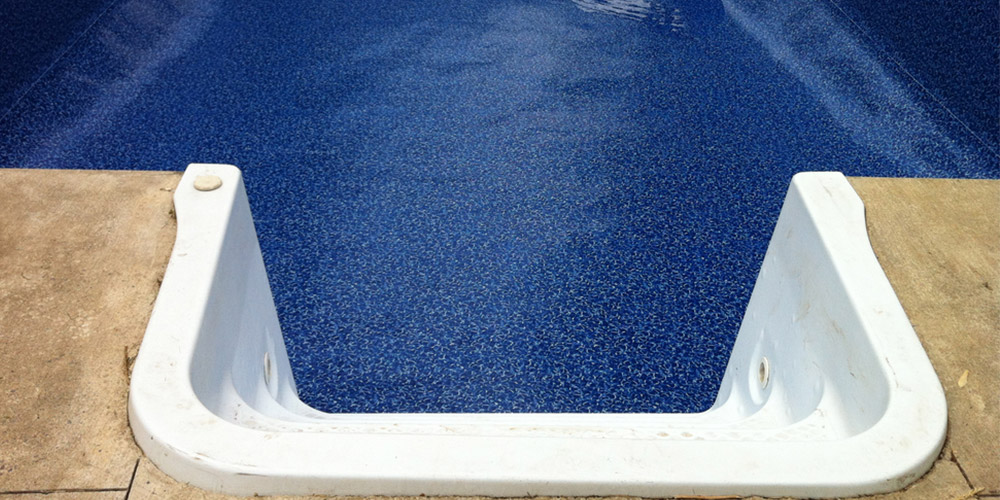
Types of Vinyl Liners
It’s true that a vinyl liner is, well, a liner made out of vinyl. But there’s more variation here than might be evident at first glance. The first point to consider is the liner’s thickness.
You’ll generally see this represented as mils. But mils isn’t an abbreviation for millimeters.
Mils, in this context, are 1/1,000th of an inch. Or to switch measurement systems, one mil is equivalent to 0.0254 mm. A vinyl liner is typically somewhere between 20 and 30 mils thick.
It’s generally best to go with thicker liners because they offer increased resistance to tears and punctures.
This is especially important if you have pets or children. A kid with a toy or a dog’s nails can easily rip through thinner vinyl lining.
The other main point of distinction comes from embossing. Embossed vinyl liners are made with distinct peaks and valleys. The fact that the material’s thickness varies in different areas means that it has a distinctive soft squishiness. But the variable thickness also makes it more prone to damage. Non-embossed vinyl liners have a consistent thickness and are totally flat across the top. This creates a more solid feeling.
Vinyl Liner Pool Cost
Most pools have a wide range of prices associated with them. This is largely due to the fact that materials are only a portion of what it costs to build a pool. Inground pools, in particular, also require a considerable amount of extra construction effort. And even factors like climate or the nature of local geography can have a big impact on overall cost.
But as a general rule, you can assume that a vinyl pool will cost somewhere around $25,000 to $40,000 in initial costs.
There are also costs associated with ongoing care and maintenance to consider. A vinyl pool’s costs are generally dependent on the previously mentioned factors:
- Size
- Shape
- Material
- Installation Costs.
It’s true that this is a rather significant purchase. But it’s also important to keep in mind that a vinyl pool is extremely cost-effective when compared with most other options.
A vinyl pool typically costs about $10,000 less than concrete or fiberglass pools.
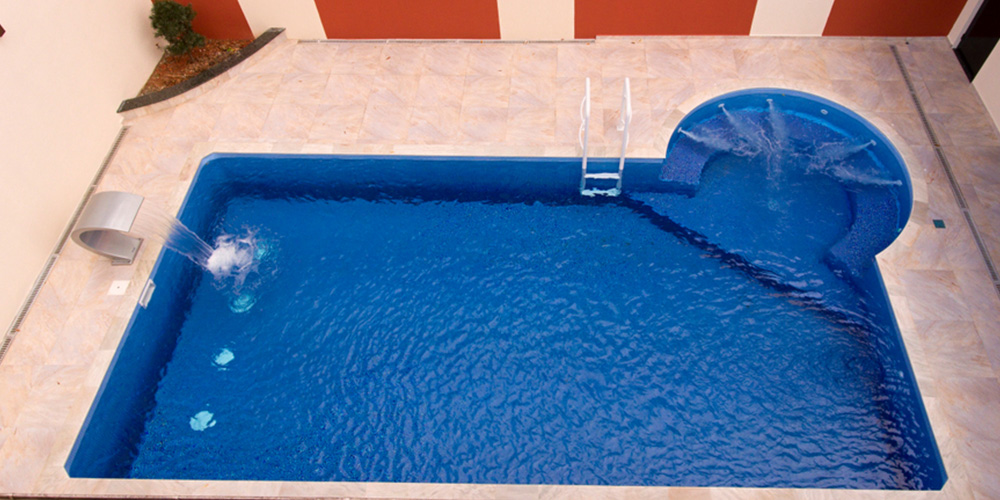
Pros and Cons
Vinyl liner pools have both advantages and disadvantages. Understanding these pros and cons can help you make an informed decision when considering whether a vinyl liner pool is the right choice for your needs. Here’s a breakdown:
Pros of Vinyl Liner Pools
Cost-Effective
A key reason while they are a popular choice is because unlike other types of pools, vinyl liner pools are generally more affordable to install. This makes them an attractive option for homeowners with budget constraints.
Design Flexibility
Vinyl liners offer a wide variety of patterns, colors, and textures, allowing you to customize the appearance of your pool to match your preferences and landscaping.
Smooth Surface
Vinyl liners provide a smooth and non-abrasive surface, which is comfortable for swimmers and less likely to cause skin irritation or scratches.
Easy on Feet
The vinyl surface is gentle on bare feet, making it a good option for families with children.
Nonporous Surface
Vinyl liners are nonporous, which means they are resistant to algae and mold growth. This can simplify maintenance and reduce the need for frequent cleaning.

Less Chemical Usage
Because vinyl liners are nonporous, they require fewer chemicals to maintain proper water chemistry compared to other pool finishes.
Quick Installation
Vinyl liner pools can be installed relatively quickly compared to other types of pools, potentially minimizing disruption to your property.
Easy to Repair
Minor tears or punctures in the vinyl liner can often be repaired with patch kits, saving you from having to replace the entire pool surface.
And Their Cons
Durability
While modern vinyl liners are more durable than their earlier counterparts, they are still generally not as long-lasting as other pool finishes like concrete or fiberglass. The liner may need replacement every 5-10 years, depending on maintenance and usage.
Vulnerability to Damage
Vinyl liners can be punctured or torn by sharp objects, rough play, or improper maintenance practices. This vulnerability requires caution and care to avoid damaging the liner.
Limited Lifespan
Over time, the vinyl liner can fade, become discolored, or show signs of wear and tear. This may affect the aesthetics of the pool.
Aesthetic Limitations
While vinyl liners offer design options, they may not provide the same level of visual sophistication as other finishes like tiles or natural stone.
Replacement Costs
Replacing a vinyl liner can be a significant expense and inconvenience compared to simple repairs. This means that the lifetime costs can be higher than other options.
Sensitivity to Water Chemistry
Although vinyl liners are generally less affected by poor water chemistry than plaster pools, extreme imbalances can still cause issues like wrinkles, fading, and reduced lifespan.
Installation Techniques
The quality of the vinyl liner installation is crucial to avoiding wrinkles and creases. Improper installation can lead to an uneven appearance and potential performance issues.
Environmental Impact
Some vinyl liners are not biodegradable, which can raise environmental concerns regarding disposal.
Remember
When considering a vinyl liner pool, it’s important to weigh these pros and cons against your specific priorities, budget, maintenance preferences, and long-term goals for your pool. Consulting with a pool professional can also help you make an informed decision based on your individual circumstances.
Build Process
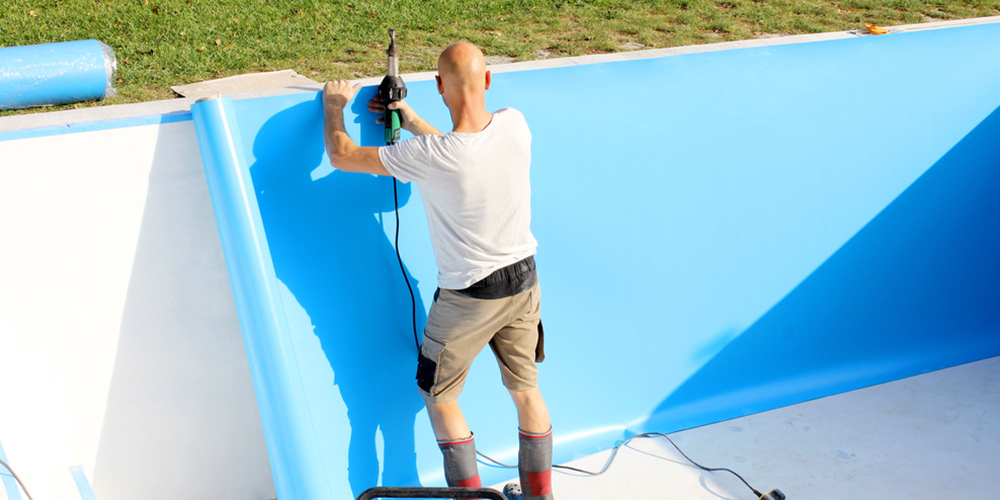
A vinyl pool installation usually takes about four to eight weeks.
This can seem like a long time when you’re eager to get your first swim in your new pool. But it’s actually a surprisingly fast process when compared with the three to six months it takes for a concrete pool.
The build process for a vinyl pool begins with:
- Excavation. This is when the ground is dug up and the pool’s foundation is prepared.
- Next, a steel framework is installed in the newly excavated area.
- Individual panels are bolted onto this framework.
- Once the structure has been finished the lighting and plumbing can be installed.
The final stage takes all of these elements and finalizes them through a variety of different methods. For example, the walls will typically be reinforced with metal supports and concrete used to bind sections together.
Keep in mind that a vinyl pool can be customized. Everything from the pool’s depth to its shape and size can be changed to fit your preferences to get your dream pool. However, many of these customization options will increase the total cost. And some might also increase the cost or feasibility of certain maintenance or expansion options.
Ongoing Care and Maintenance
People often think of pool care and maintenance as an afterthought. It’s easy to see why. Construction is a big process with a significant upfront cost. So it’s natural to focus on the pool’s initial construction. But it’s the ongoing care that will encompass the majority of your life with your vinyl pool. And these extra considerations also come with an extra cost. The following are the most significant elements of pool care and maintenance that you’ll need to factor into your total price calculations.
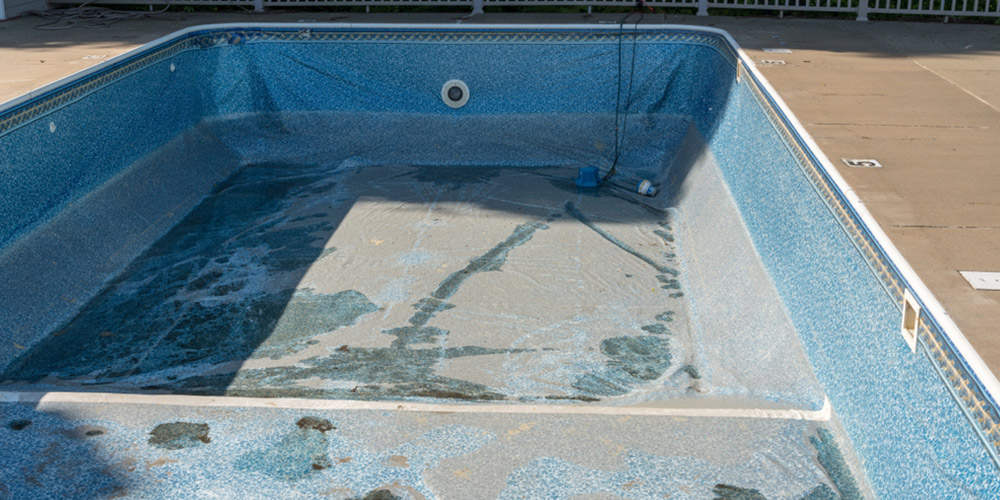
Regular Cleaning
There’s a lot to love about pool ownership. But no matter what type of pool you have, you’re going to need to clean it. The exact details will change depending on your environment. For example, some areas will have lots of leaves and plant matter falling into your pool. In those cases, you’d want to skim the pool’s surface regularly to remove that light debris. A pool filter will take care of some of these issues, but you’re still going to need to handle some cleaning on your own.
There are tools that can make this easier. Pool covers, in particular, will keep debris out of your pool. But vinyl comes with some additional challenges. For example, you shouldn’t use a standard pool vacuum with a vinyl pool. They can be too rough on the pool’s liner. You’d instead want to use a specially designed vacuum intended for a vinyl pool.
Water Chemistry Management
You’ll also need to manage the water’s chemical balance. The two big issues are pH levels and chlorine.
The pH needs to be kept at a perfect level, somewhere between 7.2 and 7.6.
Doing so requires monitoring and adjustment as needed. If the pH level gets too high then you might see algae, calcium deposits, or general visual issues with your water. But if the pH gets too low then the water’s acidity can irritate your skin when you’re taking a dip.
You’ll also need to take care of the pool’s chlorine levels. This is an important part of pool maintenance in general. But it’s especially important with vinyl since high chlorine levels can damage your liner.
You’ll generally need to keep free chlorine levels in a range of 1.0 to 2.0 to balance liner protection and sanitation.
Protecting the Liner
All of the previously described maintenance tasks touch on an important part of vinyl pool ownership – protecting the liner. Vinyl tends to be extremely susceptible to damage if you’re not careful with it. For example, keeping debris out of the pool isn’t just about aesthetics or sanitation. All of that random debris can also tear a vinyl liner. Even small stones or pebbles can pose a significant danger. This makes proper use of a pool cover even more important.
You also need to watch out for less careful swimmers. Dogs and small children in particular can pose a threat to pool lining. Dogs have their nails, and small children are notoriously prone to waving toys around. As such it’s important to put some extra care into supervising pets and children in a vinyl pool.
Even draining a vinyl pool can cause issues with the lining. If you drain the pool and leave it exposed to the sun then it can dry out, become brittle, and develop wrinkles. Because of that issue, it’s generally best to “shock” your pool instead of draining it.
The Next Step on Your Adventure in Vinyl Designs
Now that you know about vinyl pools it’s time to consider how they’d fit into your lifestyle. Take a moment to go over the pros and cons of vinyl again and really think about how it fits into your idea of the perfect pool. And if everything seems like a good fit then congratulations – you’re ready to start on the pool of your dreams.


